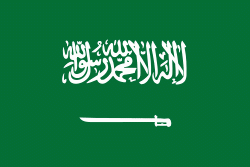Al Jawf Province (Al Jawf Region)
The Al-Jawf region is one of the most fertile regions in the Saudi Arabia. The area around the town of Tabarjal is known as a national breadbasket due to the variety of crops grown there. Unlike most of the country, parts of Al-Jawf boast a moderate climate, fertile soil, and abundant groundwater, allowing for the unusually high levels of agricultural activity seen in the region. The province is famous for cultivating olive trees and is responsible for approximately 67% of the olive oil made in the Kingdom. Al-Jawf is also home to the widespread cultivation of palm trees and produces approximately 150,000 tons of dates every year.
The word "Al-Jawf " refers to land that has widened and collapsed into a broad cavity. The name is not unique in the Arabian Peninsula and is also used for Yemen's Al Jawf Governorate. The word has been used to refer to locations in Yamamah and Diyar Saad. Other regions bearing the name Al-Jawf include the Jawf of Muammar in the Asir Region and Jawf Bani Hajir in Eastern Province.
The Al-Jawf region was formerly known as Jawf al-Amr and was inhabited by the Tayy tribe. It is also known as Jawf Al-Sirhan, which refers to a valley in the province that extends from the northwestern tip of the An Nafud desert to eastern Jordan. The word al-Jawf is used locally to refer to the city of Dumat al-Jandal.
Map - Al Jawf Province (Al Jawf Region)
Map
Country - Saudi_Arabia
 |
 |
| Flag of Saudi Arabia | |
Pre-Islamic Arabia, the territory that constitutes modern-day Saudi Arabia, was the site of several ancient cultures and civilizations; the prehistory of Saudi Arabia shows some of the earliest traces of human activity in the world. The world's second-largest religion, Islam, emerged in what is now Saudi Arabia. In the early 7th century, the Islamic prophet Muhammad united the population of Arabian Peninsula and created a single Islamic religious polity. Following his death in 632, his followers rapidly expanded the territory under Muslim rule beyond Arabia, conquering huge and unprecedented swathes of territory (from the Iberian Peninsula in the west to parts of Central and South Asia in the east) in a matter of decades. Arab dynasties originating from modern-day Saudi Arabia founded the Rashidun (632–661), Umayyad (661–750), Abbasid (750–1517), and Fatimid (909–1171) caliphates, as well as numerous other dynasties in Asia, Africa, and Europe.
Currency / Language
| ISO | Currency | Symbol | Significant figures |
|---|---|---|---|
| SAR | Saudi riyal | رس | 2 |
| ISO | Language |
|---|---|
| AR | Arabic language |















